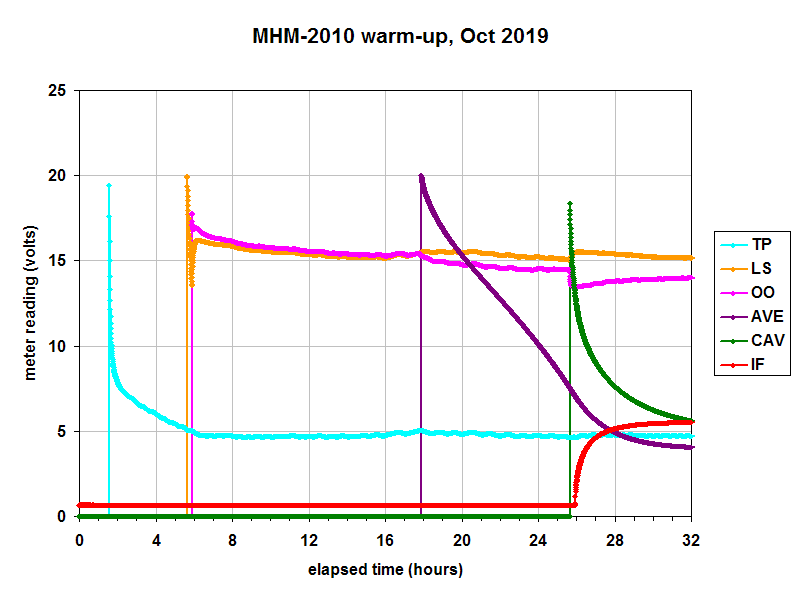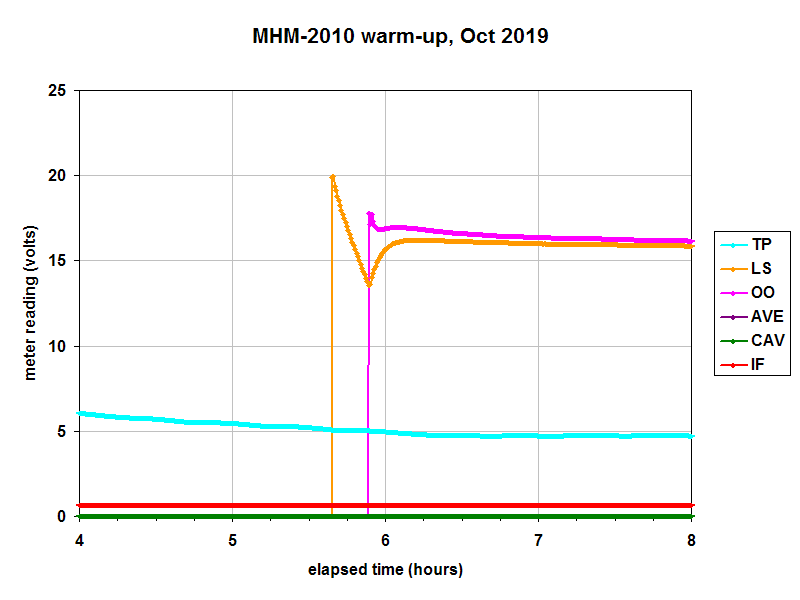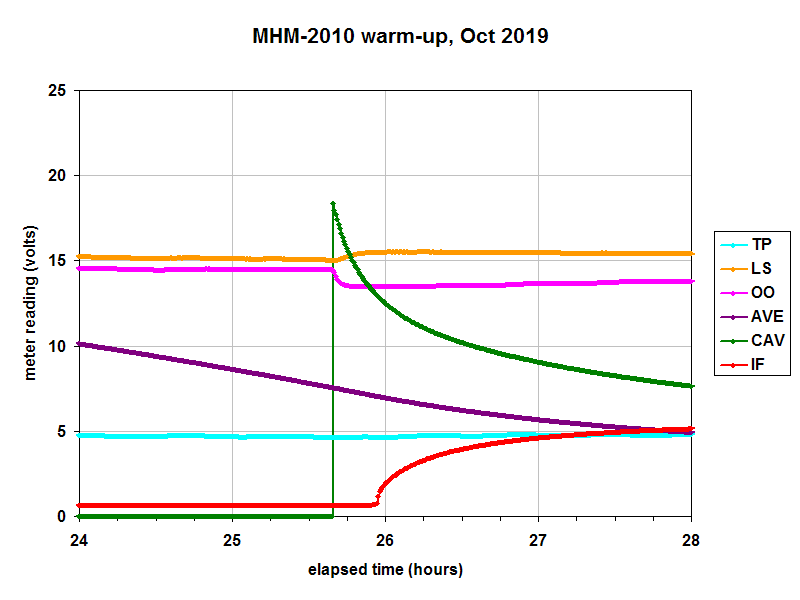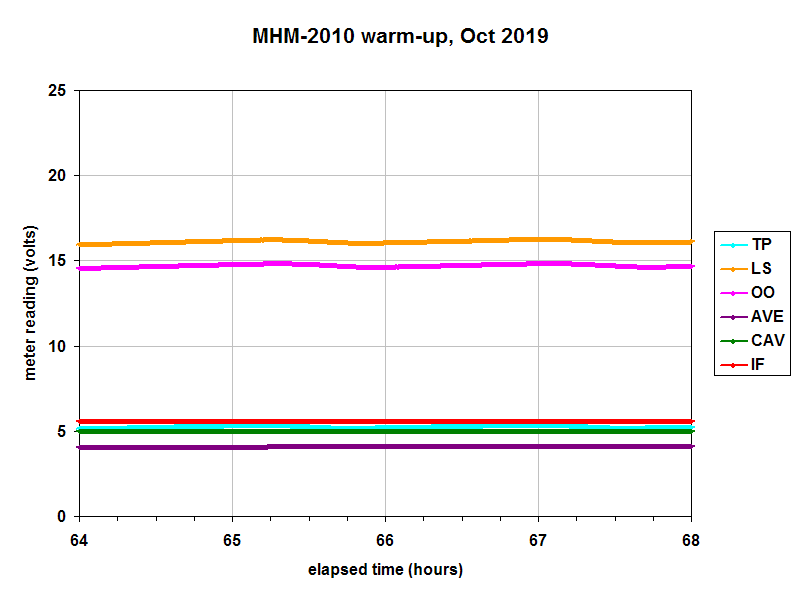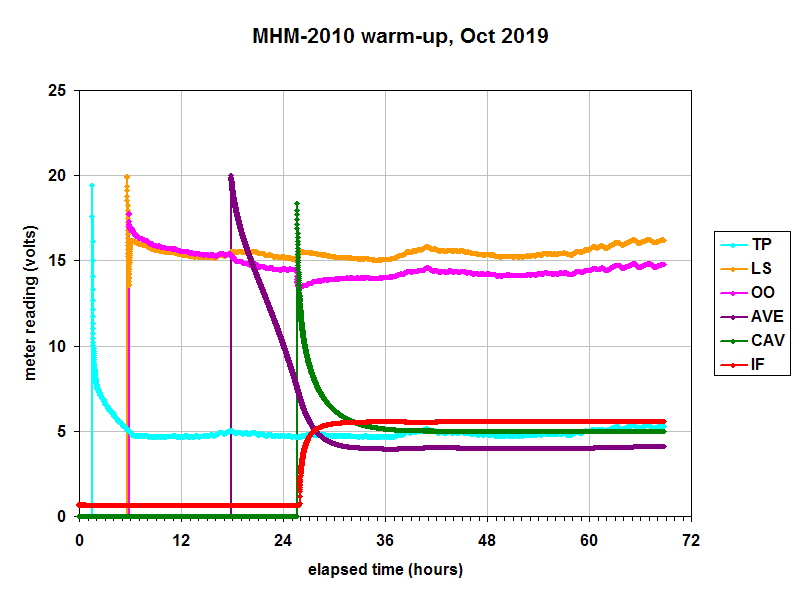
Normally one keeps a precious frequency standard like a Hydrogen maser powered up at all times. For this reason the Sigma Tau MHM-2010 has two independent AC mains power inputs as well as two independent backup power 24 VDC inputs. For most applications it is so important to keep a maser running that it's designed with this 4-way redundancy. For example the master clock for NIST and USNO, as well as the master clock for GPS, is a MHM-2010.
But over time redundancy and complacency interact behind your back. As they say, "mistakes were made", and over the past decade I got complacent about my power system(s). Through a combination of slow deferred repair and maybe a thunderstorm my H-maser lost power last week. That is, no primary AC power and no secondary AC power and no primary DC power and the secondary DC power slowly drained a massive battery from 24 V down to 7 V before I noticed.
To be honest I was away for a week, in Colorado, for the 100th anniversary of radio station WWV. By the time I noticed the problem the maser was stone cold. I think this was the first time it died since it arrived here in a box some 20 years ago. Anyway, since no life safety or nation state or paying customers depend on my maser this is not a disaster. Instead it's a rare opportunity to closely follow the warm-up process of a commercial hydrogen maser.
You may be used to an instrument booting in 15 seconds, or an OCXO warming up in 20 minutes, or a GPSDO locking in an hour. A maser takes things slower, much slower.
The data below comes from maser telemetry, via the "CML" command over RS-232 at ~30 second intervals.

